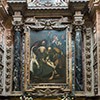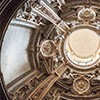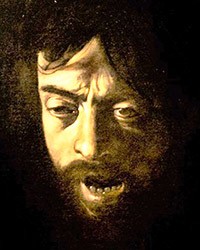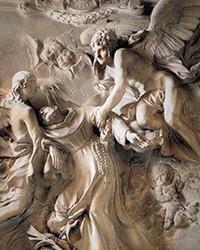The Pieta Chapel (Cappella della Pietà) in the Church of San Pietro in Montorio – a breath of fresh air of Dutch art

Dome of the Pieta Chapel, Church of San Pietro in Montorio

Church of San Pietro in Montorio, left nave

The Pieta Chapel (Cappella della Pietà) in the Church of San Pietro in Montorio

Pieta Chapel, Church of San Pietro in Montorio - view of the altar with the painting The Entombment by Dirck van Baburen

Pieta Chapel, Church of San Pietro in Montorio - view of the altar with the painting The Entombment of Christ by Dirck van Baburen

Church of San Pietro in Montorio, Pieta Chapel - The Entombment of Christ, Dirck van Baburen

Pieta Chapel, Church of San Pietro in Montorio, view of the decorations in the chapel's dome

Jesus Under the Cross, Dirck van Baburen, side wall of the Pieta Chapel, Church of San Pietro in Montorio

Jesus Under the Cross, Dirck van Baburen, side wall of the Pieta Chapel, Church of San Pietro in Montorio
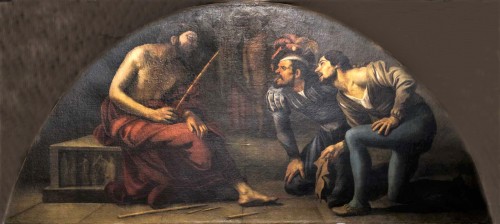
Mocking Christ, David de Haen, Pieta Chapel, Church of San Pietro in Montorio

Christ among the scribes - a painting that replaced the original canvas (Raising the Cross) by Dirck van Baburen, Pieta Chapel, Church of San Pietro in Montorio
On Janiculum Hill in the Church of San Pietro in Montorio, there are numerous magnificent paintings and sculptures completed by famous artists. It is worth taking a look at them before we come to a stop in front of the fourth chapel in the left nave. Immediately we are struck by the extremely rich sculpting decorations, but also the refined architectural concept. Only a short while later our attention is directed to the paintings found within, strangely different from the other decorations of the church. There is something veristic in them, something earthly, un-Italian, simply different. And this is indeed true.
On Janiculum Hill in the Church of San Pietro in Montorio, there are numerous magnificent paintings and sculptures completed by famous artists. It is worth taking a look at them before we come to a stop in front of the fourth chapel in the left nave. Immediately we are struck by the extremely rich sculpting decorations, but also the refined architectural concept. Only a short while later our attention is directed to the paintings found within, strangely different from the other decorations of the church. There is something veristic in them, something earthly, un-Italian, simply different. And this is indeed true.
The chapel was purchased by a diplomat of the Spanish court Pietro Cuside (Cussida), whose love for art was widely known in the city on the Tiber. From the moment of his arrival in Rome in 1602, he began collecting the works of many noteworthy contemporary painters in his palace at via del Corso. This should come as no surprise since one of his tasks was supplying the Spanish kings (Phillip III and Phillip IV) with the most interesting paintings and objects of Italian art. In time, Cuside began thinking about leaving behind not only a valuable collection of works but also an artistically important place of posthumous glory, namely a chapel in a church under the patronage of the Spanish crown. And thus was created a chapel with an imposing dome with a lantern through which light comes in illuminating the individual elements of the decoration but above all the main altar and the covered with a slab placed on the floor where the founder was laid to eternal rest. The well-thought-out and rich decoration of the chapel was to proclaim the glory of the martyred and resurrected Christ, while the light and gold originally covering the stuccos, as well as the hosts of angels, seen inside, were to be a reminder of His ascension into Heaven. The marble tablet above the altar recalls the words from the Book of Isiah (Isa 11.10): “Et erit sepulchrum eius gloriosum” (And his resting place will be glorious). Of course, this inscription refers to the Holy Sepulcher, but it most likely also concerns the one, which was created by the chapel founder for himself. The walls of the chapel are filled with elaborate stuccos consisting of stripes of candelabra vines, angel heads, garlands, motifs of pomegranate fruits, ox eyes, and acanthus leaves. The altar boasts particularly rich decorations while the reredos is flanked by two, black, marble columns. The whole is embellished by multi-colored marbles in the lower part and seated putti holding in their hands the symbols of the Passion of Christ in the upper. The painting concept which was to supplement the stuccos was entrusted to a young artist, who came from Utrecht – Dirck van Baburen. Cuside had initially wanted to collaborate with Jusepe de Ribera, whose paintings he had been collecting, and whom he valued greatly, but the painter had left for Naples and Cuside had to make do with the rising star of Roman art and at the same time an excellent imitator and interpreter of the art of Caravaggio, namely “Teodoro fiamengo” since that is the Italian name which van Baburen went by in Rome. Perhaps van Baburen had obtained the commission thanks to the personal patronage of his friend (Ribera) with whom he readily enjoyed the social life or the city, but by whom he was also inspired in his painting.

The figure of Caravaggio and his paintings, found in the churches across the Eternal City held (as it would seem) great significance for Cuside. The ambitious art collector and enthusiast desired to leave behind works, if not equal to the achievements of Michelangelo Merisi, then at least ones that would reference them. In 1615, meaning at the time when the construction of the chapel started, Caravaggio had been dead for five years, however, his fame was still alive and well, while the fashion of painting à la Caravaggio was greater still.
Van Baburen prepared a series of paintings with the theme of the passion of Christ. The focal point was the reredos of the main altar with The Entombment of Christ. We can only speculate why the client chose this particular topic for a painting above his tomb. A painting on the same subject in the Church of Santa Maria della Vallicella was at that time considered the best work of Caravaggio. An attempt to compete with him, both for van Baburen and for his patron, Cuside, had to be both tempting and inspirational. The topics of the side paintings framed in elaborate stuccos were Jesus Under the Cross and The Raising of the Cross, meaning the two most important stages of the stations of the cross preceding the deposition of the body of Christ into the tomb.
At the present, only two of van Baburen's paintings can be seen in the chapel (The Entombment and Jesus Under the Cross). The Raising of the Cross was lost in 1757 (we only know of it from a preserved drawing), being replaced by an eighteenth-century painting entitled Christ Among the Doctors.

In the chapel lunette, two more paintings can be found – The Mocking of Christ and Christ on the Mount of Olives, which in a way supplement the story of the Passion of Christ. They were completed by the Amsterdam-born David de Haen – a Caravaggionist, and a close friend of van Baburen. These paintings show a far-reaching naturalism and a dose of the grotesque – rather typical characteristics of painters from the North.
Today, the Pieta Chapel, since that is its name, does not arouse excessive emotions – it seems to be just one more interesting location in the Church of San Pietro in Montorio. At the moment of its completion in 1619 however, it was greatly admired due to its refined and rich decorations and original paintings found within. The owner of the chapel was able to enjoy its splendor for another two years before he was laid to rest inside in the year 1622.
















